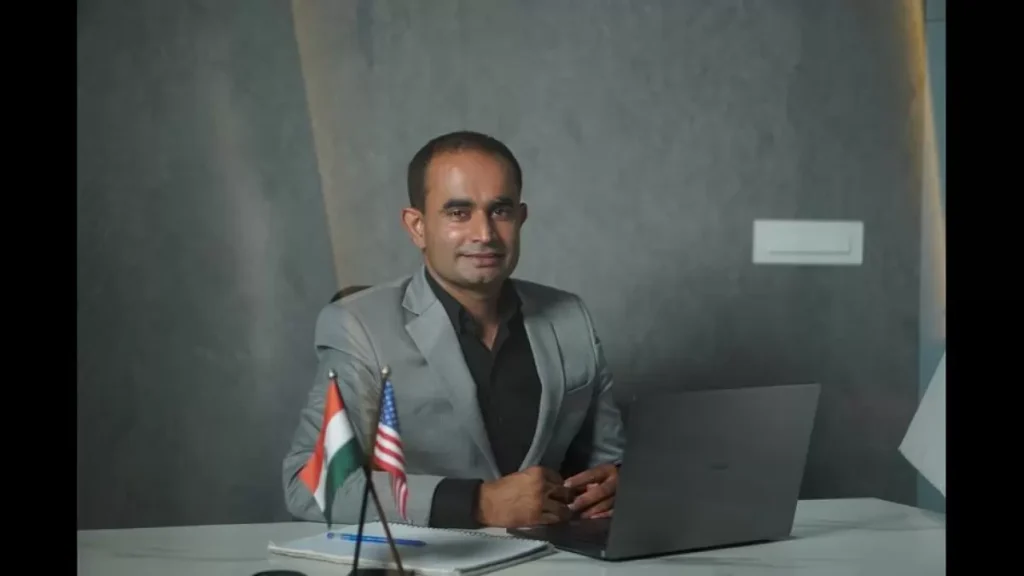When we think about modern tech entrepreneurs, we often imagine slick pitch decks, polished branding, and seed rounds. But Sabeer Nelli’s story cuts through the noise. It’s not a tale of hype—it’s one of hands-on hustle, quiet resilience, and building something powerful by simply solving the problems he lived through.
Sabeer didn’t start as a coder. He didn’t have connections in Silicon Valley or millions in venture funding. What he had was experience—a raw, real-world understanding of what it feels like to run a business, manage operations, and be overwhelmed by inefficient financial systems.
Before he ever dreamed of launching Zil Money, he was managing the chaos of gas stations, vendor payments, staffing, and fuel logistics. The tools at his disposal didn’t make it easier. In fact, they often made it worse.
So, he made a choice: instead of complaining about the system, he’d build a better one.
And that’s exactly what he did.
A Founder in the Field
As CEO of Tyler Petroleum, Sabeer wasn’t working from a glass office—he was on the ground, balancing invoices, managing fuel delivery schedules, and trying to close payroll before the bank closed. He quickly realized that most small business financial systems weren’t built with people like him in mind.
The options were either too basic or too bloated. Check printing required expensive software and special stock. Payroll systems were slow and inflexible. Managing multiple bank accounts took hours and a spreadsheet army.
That everyday frustration became his inspiration.
He started with one problem: check printing. He wanted to be able to print a check using a regular printer, without relying on pre-printed paper or legacy software. The result was a simple internal tool—but it worked. And if it worked for him, it could work for thousands of others.
That tool evolved into what we now know as Zil Money.
Built for Use, Not for Show
What makes Zil Money different isn’t just the features—it’s the philosophy behind them. Sabeer didn’t build the platform to look impressive in a product demo. He built it to perform in high-pressure, low-margin moments.
Moments like:
- A small business owner trying to pay contractors on a Friday night.
- A manager needing to send a check before a deadline with no access to special equipment.
- A bookkeeper juggling multiple client accounts across different banks.
That’s why Zil Money focuses on clarity over complexity. It lets users:
- Print checks instantly from a regular printer.
- Send ACH, wire, and eCheck payments from a single dashboard.
- Reconcile multiple bank accounts without spreadsheet headaches.
- Use payroll by credit card—bridging short-term gaps with long-term flexibility.
Every feature answers a single question: Does this make life easier for the person running the business?
If the answer is yes, it stays. If not, it goes.
Relatable Example: How One Platform Changed a Business
Consider Terrance, who owns a small fleet of delivery trucks in Arizona. He runs a tight operation, with seven drivers, rotating invoices, and constantly changing fuel costs.
Before Zil Money, his financial processes were fragmented. He printed checks at the local office supply store. He paid drivers through a mix of apps and delays. Vendors often had to wait until he could manually process payments. And tax season? A nightmare.
After switching to Zil Money, Terrance now:
- Automates weekly payments to drivers.
- Sends vendor checks in minutes from his phone.
- Uses payroll-by-credit-card during slow invoice weeks.
- Monitors every transaction in real-time, in one dashboard.
“It’s like my business runs through one clean pipe now,” he says. “I’m not juggling five tools anymore.”
Sabeer’s Playbook: Practical Advice for Founders
Sabeer didn’t grow Zil Money with viral marketing or investor buzz. He built it steadily, intentionally, and with a set of values that any entrepreneur can apply:
- Build What You’ve Struggled With
The most powerful ideas come from personal pain points. Sabeer didn’t build software he thought others wanted—he built what he desperately needed.
Takeaway: Your frustration is your blueprint. Solve your own problem first.
- Simplicity Is a Strategy
Zil Money succeeds because it doesn’t try to impress—it tries to help. That means fewer clicks, fewer questions, and more outcomes.
Takeaway: Don’t make your users feel smart. Make them feel understood.
- Listen, Adapt, Repeat
Sabeer constantly refines the platform based on user feedback. Every support ticket, every suggestion, is fuel for improvement.
Takeaway: The best updates don’t come from brainstorming—they come from listening.
- Respect the User’s Time
Zil Money doesn’t trap users in complex flows. It gives them what they need fast, so they can get back to business.
Takeaway: Time saved is trust earned.
- Grow with Integrity
As Zil Money scaled, Sabeer refused to sacrifice simplicity or transparency. No bait-and-switch pricing. No locked-in contracts. Just clean, reliable service.
Takeaway: Growth is meaningful only if your users grow with you.
Why His Leadership Works
Sabeer leads like someone who’s been there—because he has.
He’s not removed from his product. He’s connected to it. He pays attention to what’s not working, celebrates what is, and stays involved in product development and support.
That grounded leadership builds loyalty—not just from customers, but from his team.
His approach is quiet, steady, and user-focused. In a world that celebrates big launches and bold pivots, Sabeer reminds us that consistency scales better than charisma.
Conclusion: Solve Small, Win Big
Sabeer Nelli didn’t set out to build a fintech empire. He set out to fix one small thing that was making his business harder than it had to be.
That one small thing became a movement.
What started as a check printing solution evolved into a full-service platform that now empowers business owners to run their finances with ease, clarity, and control.
And that’s the lesson: You don’t need a billion-dollar idea. You need a real problem, the courage to solve it, and the discipline to keep improving.
So if you’re building something—whether it’s software, a service, or your own small operation—take a page from Sabeer’s story:
- Start where you are.
- Solve what you know.
- Stay close to the user.
- Scale only what serves.
Because when your solution comes from the trenches, it doesn’t just work—it resonates.
And in business, resonance beats noise every time.











